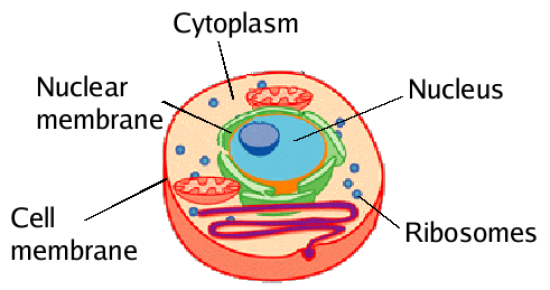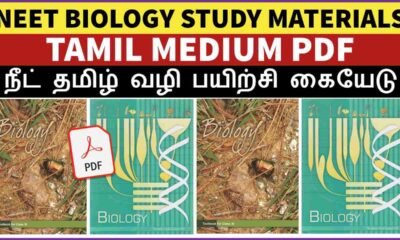Blog
Difference Between Cytoplasm and Nucleoplasm

In this article we will discuss about difference between cytoplasm and nucleoplasm
Difference Between Cytoplasm and Nucleoplasm
1. Location: Cytoplasm is the fluid-filled region outside the nucleus in a cell, while nucleoplasm is the fluid-filled region inside the nucleus.
2. Composition: Cytoplasm is a complex mixture of water, ions, proteins, organelles, and other cellular components. Nucleoplasm is primarily composed of water, along with nucleic acids, proteins, and enzymes specific to nuclear functions.
3. Function: Cytoplasm is involved in various cellular processes, such as metabolism, protein synthesis, and transportation of molecules. Nucleoplasm primarily facilitates nuclear processes, including DNA replication, transcription, and RNA processing.
4. Organelles: Cytoplasm contains various organelles, such as mitochondria, endoplasmic reticulum, Golgi apparatus, and ribosomes. Nucleoplasm contains specific nuclear organelles, including the nucleolus and nuclear bodies.
5. DNA Presence: Cytoplasm does not contain the cell’s DNA, as it is confined to the nucleus. Nucleoplasm, however, contains the cell’s DNA in the form of chromatin.
6. Cellular Communication: Cytoplasm serves as the medium for intercellular communication and transport of molecules between different organelles. Nucleoplasm is involved in intra-nuclear communication and facilitates the movement of molecules within the nucleus.
7. Size and Volume: Cytoplasm occupies a larger volume within the cell compared to nucleoplasm, as it extends throughout the entire cell excluding the nucleus. Nucleoplasm occupies a smaller volume confined within the nuclear envelope.
8. Membrane Boundaries: Cytoplasm is not enclosed by a membrane, while nucleoplasm is enclosed by the nuclear envelope, which separates it from the cytoplasm.
9. Movement of Molecules: Cytoplasm allows free movement of molecules, including ions, proteins, and vesicles. Nucleoplasm has a more restricted movement of molecules and requires nuclear pore complexes for selective transport.
10. Cellular Metabolism: Cytoplasm plays a crucial role in cellular metabolism, including energy production and storage. Nucleoplasm is primarily involved in nuclear processes and does not directly participate in metabolic reactions.
Summary: Difference Between Cytoplasm and Nucleoplasm
- Cytoplasm is located outside the nucleus, while nucleoplasm is located inside the nucleus.
- Cytoplasm is a complex mixture of water, ions, proteins, and organelles, while nucleoplasm is primarily composed of water, nucleic acids, proteins, and nuclear-specific enzymes.
- Cytoplasm is involved in cellular processes, while nucleoplasm facilitates nuclear processes.
- Cytoplasm contains various organelles, while nucleoplasm contains specific nuclear organelles.
- Cytoplasm does not contain DNA, while nucleoplasm contains chromatin.
- Cytoplasm is involved in intercellular communication, while nucleoplasm facilitates intra-nuclear communication.
- Cytoplasm occupies a larger volume compared to nucleoplasm.
- Cytoplasm does not have a membrane boundary, while nucleoplasm is enclosed by the nuclear envelope.
- Cytoplasm allows free movement of molecules, while nucleoplasm has restricted movement through nuclear pores.
- Cytoplasm is involved in cellular metabolism, while nucleoplasm is primarily involved in nuclear processes.

 Entertainment1 month ago
Entertainment1 month agoIbomma Bappam: Redefines Telugu Streaming Trend

 Blog1 month ago
Blog1 month ago[PPT] The living world Class 11 Notes

 Blog1 month ago
Blog1 month ago[PPT] Human Reproduction Class 12 Notes
- Blog1 month ago
Class 12 Biology Notes Chapter wise PPT

 Blog1 month ago
Blog1 month agoIosmirror.cc Apk: Enables Smart Screen Sharing
- Blog1 month ago
PG TRB Botany Study Material PDF Free Download

 Blog1 month ago
Blog1 month agoDownload NEET Biology Study Materials in Tamil
- Blog1 month ago
Class 11 Biology Notes Chapter wise PPT












